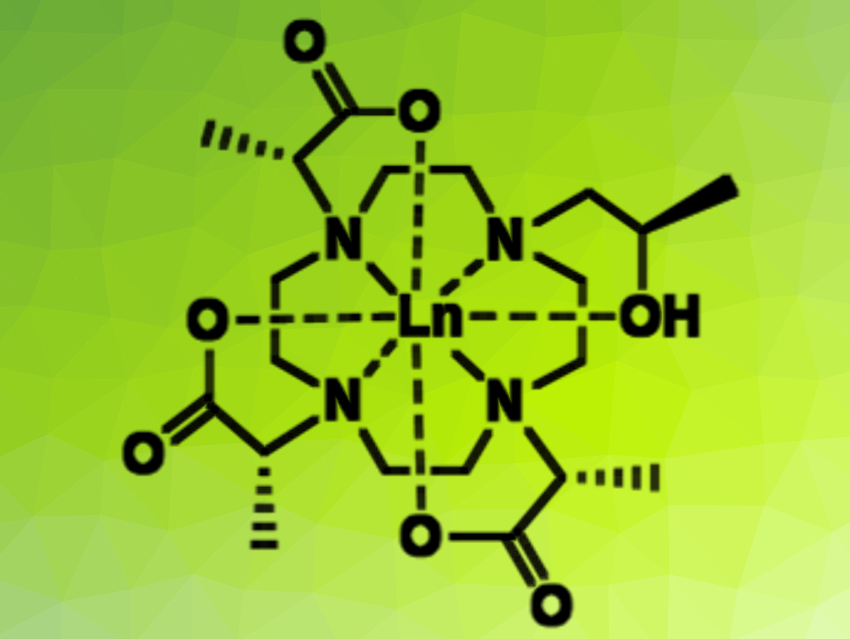Contrast agents for magnetic resonance imaging (MRI) usually consist of stable complexes of paramagnetic lanthanide ions. In particular, Gd complexes are widely used for clinical diagnosis and preclinical studies. In contrast, chemical exchange saturation transfer (CEST) agents (Eu, Tm or Yb complexes) are only used in preclinical MRI.
Lorenzo Tei, University of Eastern Piedmont, Alessandria, Italy, Daniela Delli Castelli, University of Turin, Italy, and colleagues have synthesized a new macrocyclic ligand with improved contrast properties. The ligand, HPDO3MA [(R,R,R,R)‐10‐(2‐hydroxypropyl)‐α,α′,α′′‐trimethyl‐1,4,7,10‐tetraazacyclododecane‐1,4,7‐triacetic acid] (pictured), was prepared from a carbobenzyloxy (Cbz)-protected 1,4,7,10-tetraazacyclododecane in four steps. The structure was derived from two similar ligands: the clinically approved HPDO3A (10‐(2‐hydroxypropyl)‐1,4,7,10‐tetraazacyclododecane‐1,4,7‐triacetic acid) and DOTMA (1R,4R,7R,10R)‐α,α′,α′′,α′′′‐tetramethyl‐1,4,7,10‐tetraazacyclododecane‐1,4,7,10‐tetraacetic acid).
The team observed a substantial increase in the relaxation efficiency of the Gd complex and a doubled sensitivity gain in the CEST effect compared with similar systems. Moreover, the complexes show a high kinetic inertness at physiological pH, higher than that of some clinically approved agents.
The results demonstrate how the properties of MRI probes can be optimized through relatively simple chemical modifications. Improving both kinetic stability and performance of MRI probes are significant steps towards the development of safer and more effective agents.
- Modifying LnHPDO3A Chelates for Improved T1 and CEST MRI Applications,
Giuseppe Ferrauto, Daniela Delli Castelli, Loredana Leone, Mauro Botta, Silvio Aime, Zsolt Baranyai, Lorenzo Tei,
Chem. Eur. J. 2019.
https://doi.org/10.1002/chem.201806023




